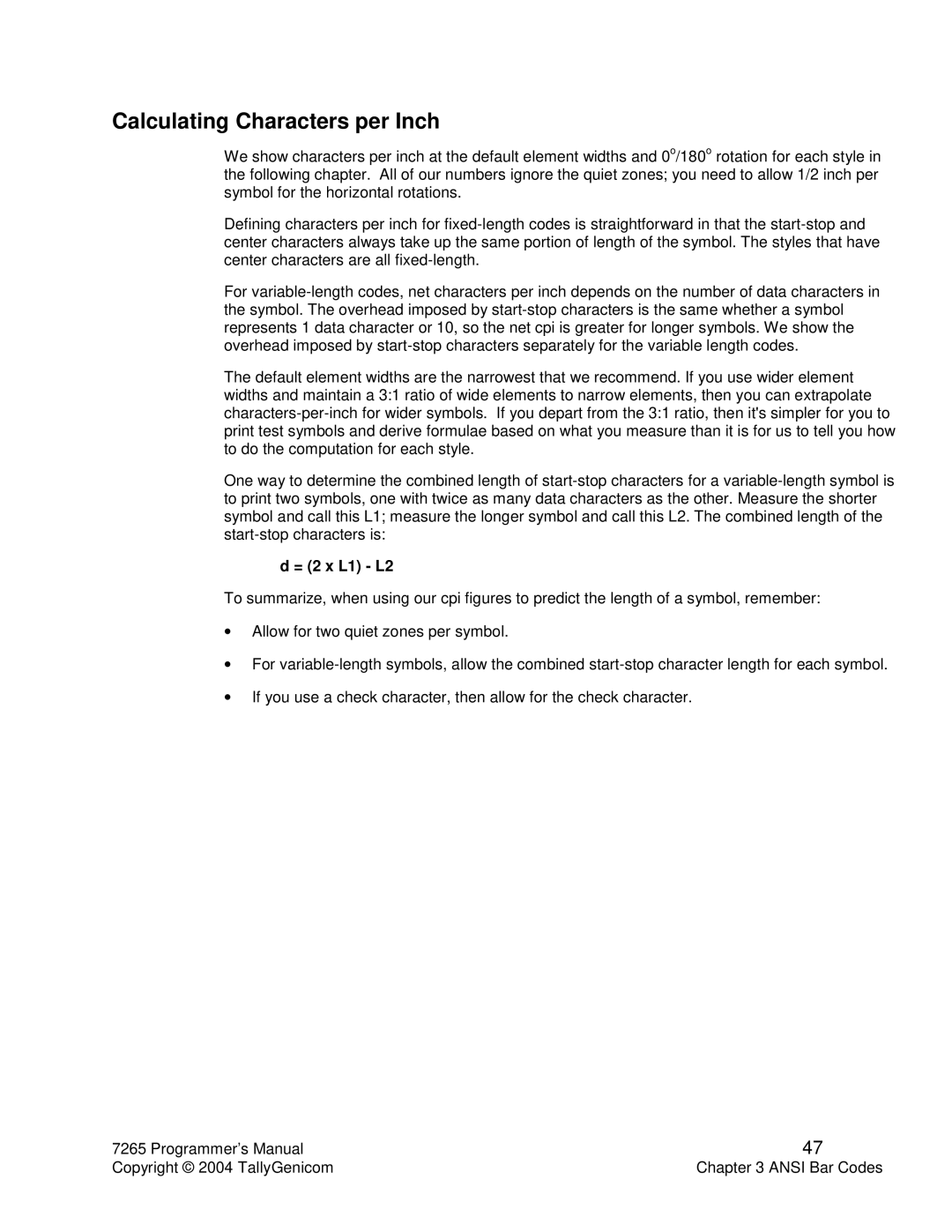Calculating Characters per Inch
We show characters per inch at the default element widths and 0o/180o rotation for each style in the following chapter. All of our numbers ignore the quiet zones; you need to allow 1/2 inch per symbol for the horizontal rotations.
Defining characters per inch for fixed-length codes is straightforward in that the start-stop and center characters always take up the same portion of length of the symbol. The styles that have center characters are all fixed-length.
For variable-length codes, net characters per inch depends on the number of data characters in the symbol. The overhead imposed by start-stop characters is the same whether a symbol represents 1 data character or 10, so the net cpi is greater for longer symbols. We show the overhead imposed by start-stop characters separately for the variable length codes.
The default element widths are the narrowest that we recommend. If you use wider element widths and maintain a 3:1 ratio of wide elements to narrow elements, then you can extrapolate characters-per-inch for wider symbols. If you depart from the 3:1 ratio, then it's simpler for you to print test symbols and derive formulae based on what you measure than it is for us to tell you how to do the computation for each style.
One way to determine the combined length of start-stop characters for a variable-length symbol is to print two symbols, one with twice as many data characters as the other. Measure the shorter symbol and call this L1; measure the longer symbol and call this L2. The combined length of the start-stop characters is:
d = (2 x L1) - L2
To summarize, when using our cpi figures to predict the length of a symbol, remember:
•Allow for two quiet zones per symbol.
•For variable-length symbols, allow the combined start-stop character length for each symbol.
•If you use a check character, then allow for the check character.
